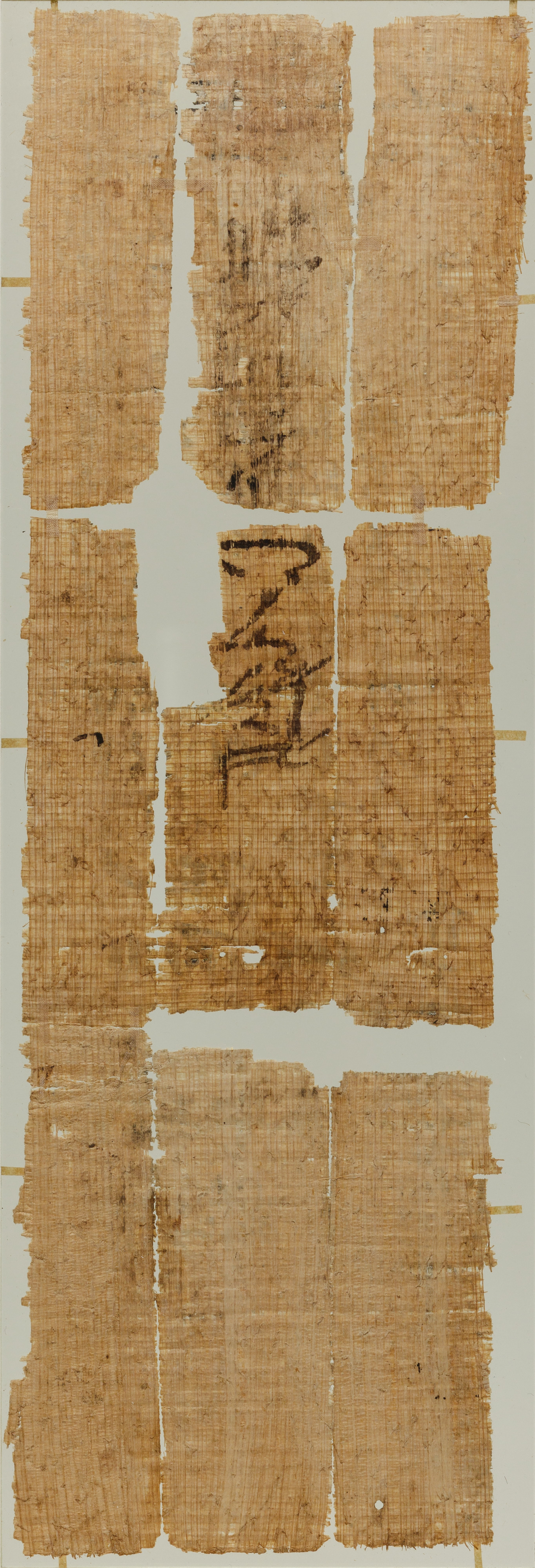Heqanakht's account, written over an effaced letter regarding two female servants
Middle Kingdom
Heqanakht was a native of Thebes (present day Luxor) during the early Dynasty 12. Letters and accounts written by Heqanakht and one or more scribes on sheets of papyrus were discovered by Museum excavator Herbert E. Winlock in one of the rock cut tomb complexes along the cliff overlooking the temples at Deir el-Bahri. The documents - some still folded, tied and sealed, when found - provide unique insights into the domestic and financial affairs of an average middle class family that lived almost four thousand years ago.
In this papyrus, Heqanakht wrote an account of flax and grain, which he sealed with the mud sealing (2018.595.2) whose impression matches that on another letter by him in our collection (22.3.518). However, he was not the first to use this sheet of papyrus. Traces of ink reveal an effaced letter from a man named Intef to a steward by the name of Ineswisetekh regarding copper and two female servants.
Due to rights restrictions, this image cannot be enlarged, viewed at full screen, or downloaded.
This artwork is meant to be viewed from right to left. Scroll left to view more.



